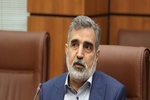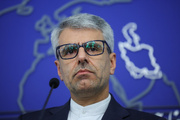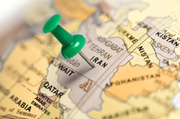Zahedi, a senior IRGC commander and top military advisor in Lebanon and Syria, was assassinated in an Israeli airstrike targeting the Iranian consulate in Damascus on April 1.
Nilforoushan, who replaced Zahedi, was also assassinated, along with Sayyed Hassan Nasrallah and other senior Hezbollah officials, in an Israeli airstrike on the southern suburbs of Beirut on September 28.
Nilforoushan was laid to rest in his hometown of Isfahan on Thursday with full state honors, after funerals held in multiple cities across Iran and Iraq.
Brigadier General Javad Esteki, a senior IRGC commander based in Tehran, told the Press TV website that Nilforoushan’s appointment as Iran’s top military advisor in Lebanon was relayed to him by IRGC’s top commander, Major General Hossein Salami.
“Without hesitation, he traveled to Lebanon to serve the Axis of Resistance,” the top IRGC commander stated.
Esteki, who worked closely with Nilforoushan for years, pointed to the unique traits that made the martyred commander an ideal choice for this important role.
“Martyr Nilforoushan possessed many ideal qualities. He was fluent in Arabic, had spent years in the region, and was familiar with both the resistance fighters and their strategies,” Esteki said, adding that Nilforoushan also had exceptional military expertise.
The IRGC commander elaborated on how the deaths of Nilforoushan and Zahedi within a span of five months disrupted Israel's plans against the Axis of Resistance.
“The Zionists attempted a psychological war following the martyrdoms of Brigadier General Mohammad Reza Zahedi and Major General Abbas Nilforoushan, but as we can see, by God’s will, resistance operations have intensified, and more young people are eager to join the resistance front,” he commented.
Esteki stressed that the deaths of resistance commanders would not weaken the resolve of the resistance in the fight against Zionist occupation and its backers.
“After the enemy assassinated high-ranking commanders, they believed they could cripple the resistance. However, the resistance has not only recovered, but successors for the martyred commanders have already been appointed,” he added.
Drawing a parallel with the Holy Defense War in the 1980s, Esteki said the Islamic Republic faced similar situation during the eight years of war with the Ba'athist regime.
"Every time a commander was martyred, a successor was immediately appointed."
The IRGC commander stressed that the enemy fears resistance commanders even more after their martyrdom, referencing Iran’s top anti-terror commander General Qassem Soleimani and his enduring legacy.
“The enemy fears Martyr Soleimani more than General Soleimani,” Esteki quoted Leader of the Islamic Revolution, Ayatollah Seyyed Ali Khamenei as saying about the former IRGC Quds Force commander.
He also compared the military services of Zahedi and Nilforoushan, both of whom served in Lebanon and were martyred on the path to liberating al-Quds.
“Both followed the path of the Leader of the Islamic Revolution. They were brave and humble, remaining largely unknown until after their martyrdom,” Esteki remarked.
“Moreover, both ascended through the military ranks, starting from the lowest levels and rising to the highest positions.”
MA/Press TV

























Your Comment